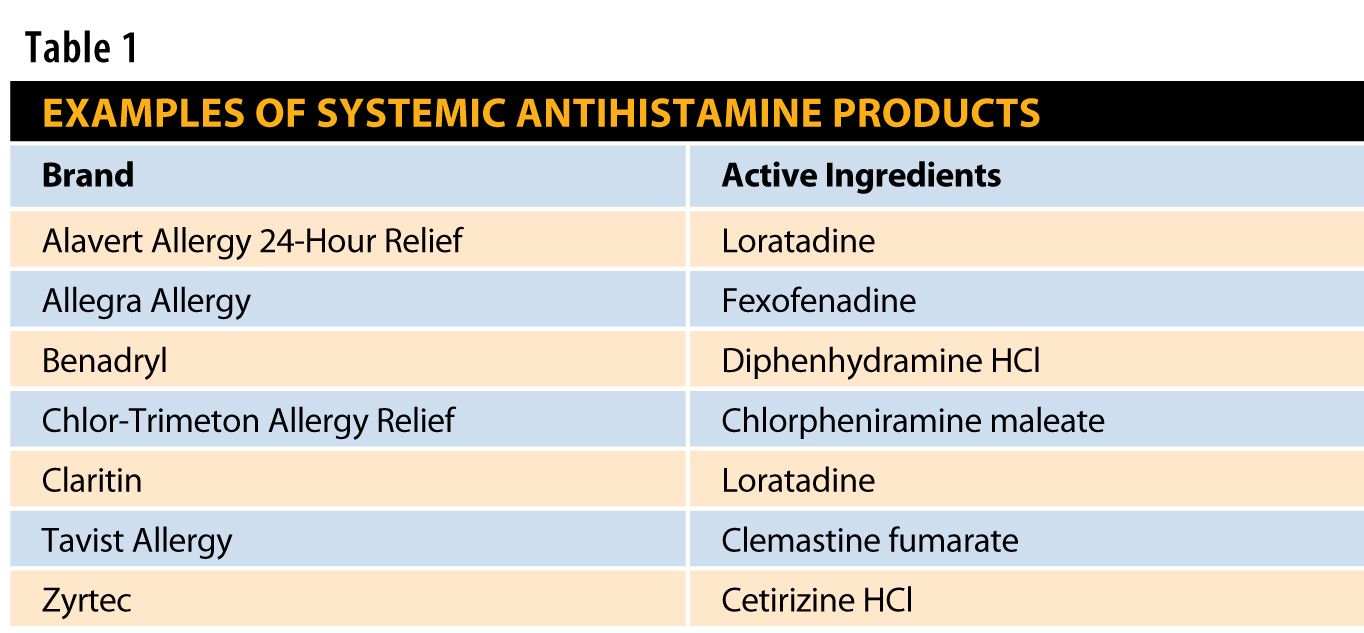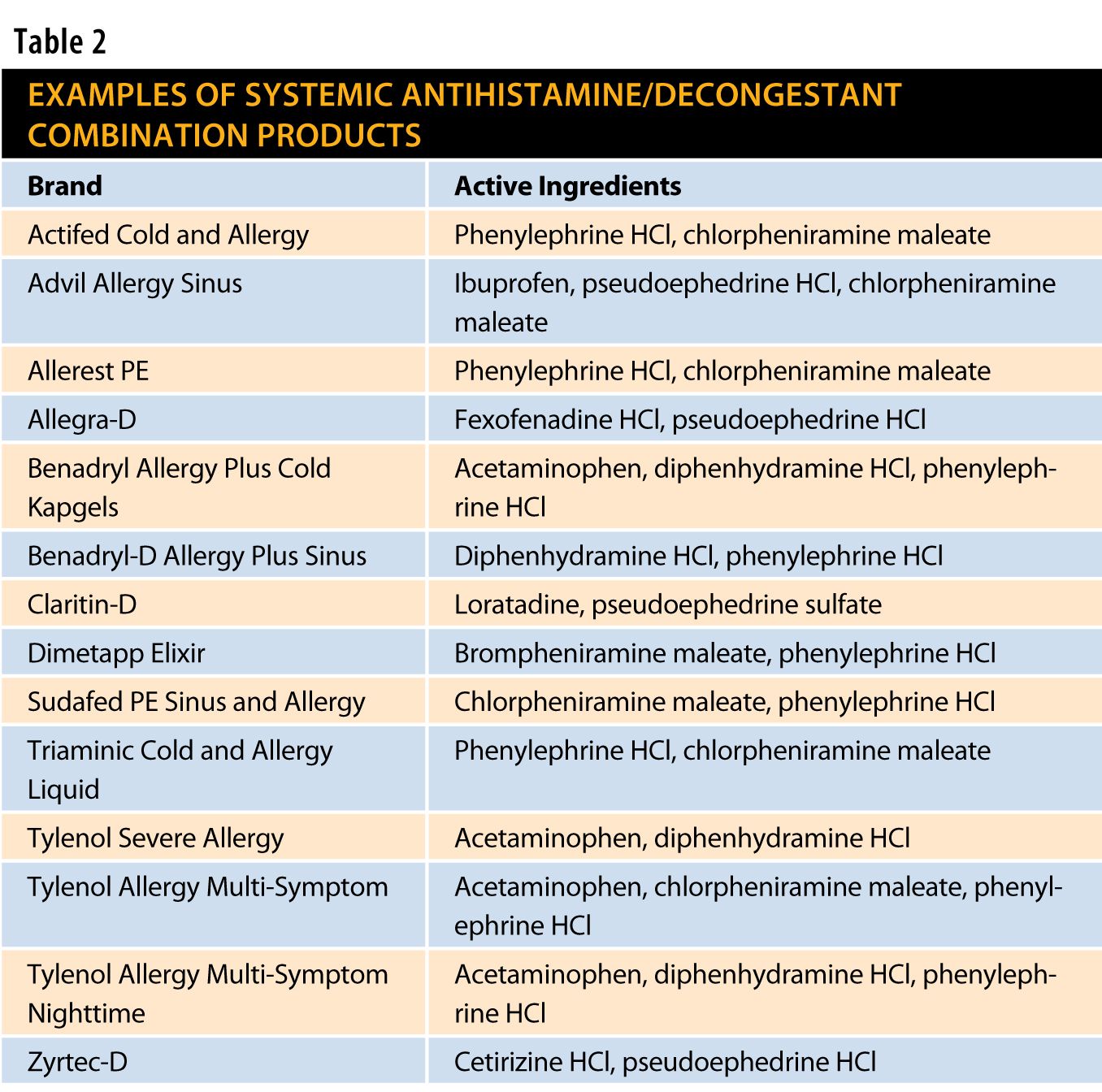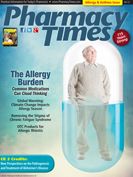Publication
Article
Pharmacy Times
Managing Allergic Rhinitis
Author(s):
Whether seasonal or perennial, allergic rhinitis brings patients to the pharmacy counter looking for relief.
Whether seasonal or perennial, allergic rhinitis brings patients to the pharmacy counter looking for relief.
Patients who experience allergic rhi- nitis are eager to find relief. The condition’s most common symp- toms include repetitive sneezing, nasal congestion, rhinorrhea, and itchy and watery eyes. For some, these symptoms can be so severe that they negatively affect quality of life, interrupting daily activities and causing fatigue and sleep disturbances.1-3
In the United States, allergic rhinitis affects an estimated 20% of adults and 40% of children, with symptoms typically appearing after the age of 2 years, and the number of newly diagnosed cases grows each year. 1-3 The condition appears to be more prevalent in the southern parts of the United States than elsewhere in the country.3 The severity and incidence of allergic rhinitis can vary from patient to patient, so therapy should always be tailored to an individual patient’s symptoms, medical/drug allergy history, and medication profile.
Types of Allergic Rhinitis
Allergic rhinitis can be classified as seasonal (hay fever) or perennial.3,4 Seasonal allergic rhinitis (SAR) symptoms may occur in the spring, summer, and early fall, and are caused by allergic sensitivity to pollen from trees, grasses, weeds, or airborne mold spores.3,4 Perennial allergic rhinitis (PAR) symptoms typically occur year-round and are caused by hyper- sensitivity to dust mites, animal dander, cockroaches, or mold spores.1,3,4 Patients may experience 1 or more of the following symptoms: episodes of repetitive sneezing, rhinorrhea, postnasal drip, nasal congestion, loss of smell, headaches, ear- ache, excessive tearing, red itchy eyes, eye swelling, fatigue, drowsiness, and malaise.3,5
In some cases, patients may experience both types of allergic rhinitis, exhibiting more severe symptoms during specific pollen seasons.3 Allergic rhinitis can be associated with complications such as otitis media, sinusitis, recurring sore throat, cough, headache, changes in sleep patterns, sleep apnea, depression, fatigue, anxiety, irritability, poor school performance, and impaired cognitive function.3,4-6
According to the American Academy of Allergy, Asthma & Immunology, an estimated 1 of 3 individuals with rhinitis does not have allergies.7 These patients have nonallergic rhinitis, which is caused by hormones (eg, during pregnancy or puberty or due to thyroid conditions); structural defects (eg, septal deviation or adenoid hypertrophy); lesions (eg, nasal polyps or neoplasms); and medications such as beta-blockers, oral contraceptives, clonidine, angiotensin-converting enzyme inhibitors, aspirin and other nonsteroidal anti-inflammatory drugs, or overuse of topical decongestants.3-7
Pharmacologic Therapy
Allergic rhinitis cannot be cured, but it can be managed with proper therapy.3 The ideal way to manage the condition is to avoid allergy triggers; however, this is not always practical or feasible. Sometimes pharmacologic agents will be necessary to reduce or prevent symptoms. In general, allergic rhinitis is treated in 3 steps: environmental control measures and allergen avoid- ance, pharmacologic therapy, and immunotherapy.3,5 Many patients have to explore a variety of therapy options, possibly including a combi- nation of therapies, before finding the treatment that works best for them. Factors to be considered when initi- ating pharmacologic therapy include the patient’s medi- cal and medication history, specific symptoms and their severity, patient preference, adverse side effects, cost, and frequency of treat- ments.
There is a range of nonprescription agents marketed for the management and relief of allergic rhinitis symptoms, includ- ing oral and ocular antihistamines; oral, nasal, and ocular decongestants; and mast cell stabilizers.3 These products are avail- able as single entity or multiple ingredient products in a variety of dosage forms, including immediate- and sustained- release formulations, to meet the needs of a variety of patients, including adults and children.
Antihistamines
Antihistamines are the standard therapy to provide symptomatic relief of allergic rhinitis and are indicated for the relief of itching, sneezing, and rhinorrhea.3 First- generation, or sedating, antihistamines are associated with drowsiness/sedation, impaired mental alertness, and anticho- linergic effects.3 Second-generation, or nonsedating, nonprescription antihista- mines, which include loratadine, ceti- rizine, and fexofenadine, are quickly absorbed after oral administration with time-to-peak plasma concen- trations in the 1-to-3 hour range.3 The second-generation antihistamines generally do not cause significant drowsiness.3 Table 1 provides examples of systemic antihis- tamine products.

Decongestants
Because congestion commonly occurs with allergic rhinitis, many patients may elect to use a decongestant as well.3 Nonprescription decongestants include pseudoephedrine and phenylephrine. Decongestants are indicated for the temporary relief of nasal and eustachian tube congestion and cough associated with postnasal drip.3
Common adverse effects associated with oral decongestants include insomnia, nervousness, and tachycardia. Decongestants may also exacerbate medical conditions that are sensitive to adrenergic stimulation (eg, hypertension, diabetes, coronary artery disease, prostatic hypertrophy, and elevated intraocular pressure).3 Patients should also be reminded about the risk of rhinitis medicamentosa (rebound conges- tion) when using topical decongestants for more than 3 to 5 days.3
Many products on the market contain both an antihistamine and a decongestant. Patients should be advised to only use combination products when warranted, so as to avoid unnecessary drug use. Because antihistamines and decongestants interact with a number of medications and are contraindicated in various patient popula- tions, pharmacists are in a pivotal position to identify potential drug—drug interactions or contraindications. Table 2 contains a list of combination antihistamine/ decongestant products.


Cromolyn Sodium
Another nonprescription option for allergy suffers is the nasal spray cromolyn sodium, which is indicated for preventing and treating symptoms associated with allergic rhinitis.3 Cromolyn sodium is approved for those 5 years and older and should be administered as 1 spray in each nostril 3 to 6 times daily. Treatment is more effective if initiated at least a week before seasonal symptoms occur.3 It may take 3 to 7 days for initial treatment efficacy to become apparent and 2 to 4 weeks of continued therapy to achieve optimal effect.3
Sneezing is the most common adverse effect, and other adverse effects include a burning and stinging sensation in the nasal area.3,8 There are no known drug interactions associated with intranasal cromolyn sodium.
Ocular Allergies
Some patients with allergic rhinitis also suffer from watery and itchy eyes and may wish to use an ocular antihistamine prod- uct. Available ophthalmic nonprescrip- tion antihistamines include pheniramine maleate and antazoline phosphate.6 These antihistamine products are available in combination with the decongestant nap- hazoline. The most common adverse effects associated with the use of oph- thalmic antihistamines include burning, stinging, and discomfort upon instillation.6
Also on the market is ketotifen 0.025%, which relieves ocular itching without the use of a decongestant. Ketotifen is clas- sified as a noncompetitive H1-receptor antagonist and mast cell stabilizer that inhibits the release of mediators from cells
involved in hypersensitivity reactions.6,9,10 It is indicated for the temporary relief of itchy eyes due to exposure to ragweed, pollen, grass, animal hair, and dander. tory for potential drug—drug interactions and contraindications, including allergy sensitivities. They should also encourage patients with severe or persistent symp- toms to seek further medical evaluation. The recommended dosage is 1 affected eye(s) every 8 to 12 hours, but no more than twice daily.6,9,10 It is indicated for use in individuals 3 years of age and older and is classified in FDA pregnancy category C.9
Common adverse reactions include headache, dry eyes, and rhinitis.6,9,10 Ketotifen is not indicated for treatment of contact lens—related inflam- mation. Patients who wear contacts should be instructed to wait at least 10 minutes before inserting their lenses after instillation of ketoti- fen.9,10
Conclusion
Prior to recommending any nonprescription products for allergic rhinitis, phar- macists should evaluate the patient’s medication profile and medication his- drop to the Patients should be advised to only use combination products when war- ranted, so as to avoid unnecessary drug use. During counseling, patients should always be advised to adhere to the manufacturer’s directions and be aware of potential adverse effects.
Pharmacists can also present various nonpharmacologic approaches, such as using nasal saline solutions to relieve nasal irritation and dryness or nonmedicated nasal strips for congestion. They can also make recommendations for decreasing allergy triggers, including washing bedding in hot water every week, vacuuming carpets and upholstery regularly, using allergy covers on pillows and mattresses, lowering the humidity level in the home to reduce the incidence of mold, keeping car and home windows closed (especially when pollen and mold levels are high), and regularly checking pollen and mold counts in the local area.3,11-14 PT
Ms. Terrie is a clinical pharmacy writer based in Haymarket, Virginia.
References
- Lambert M. Practice parameters for managing allergic rhinitis. Am Fam Physician. 2009; 80(1).
- Allergy Statistics. America Academy of Allergy Asthma and Immunology website. www.aaaai.org/media/statistics/allergy-statistics.asp. Accessed March 3, 2012.
- Scolaro K. Disorders related to colds and allergy. In: Krinsky D. Berardi R, Ferreri S, et al, eds. Handbook of Nonprescription Drugs. 17th ed. Washington, DC: American Pharmacists Association; 2012.
- Rhinitis. The American Academy of Allergy, Asthma and Immunology website. www.acaai.org/public/advice/rhin.htm. Accessed March 3, 2012
- Sheikh J, Najib U. Rhinitis, allergic. eMedicine website. http://emedicine.medscape.com/article/134825-overview. Accessed March 3 2012.
- Fiscella R, Jensen M. Ophthalmic disorders. In: Krinsky D, Berardi R, Ferreri S, et al, eds. Handbook of Nonprescription Drugs. 17th ed. Washington, DC: American Pharmacists Association; 2012
- Rhinitis (hay fever). The American Academy of Allergy, Asthma and Immunology website. www.aaaai.org/conditions-and-treatments/allergies/rhinitis.aspx. Accessed March 3, 2012.
- NasalCrom product information. Blacksmith Brands website. http://nasalcrom.com. Accessed March 1, 2012.
- Zaditor product information. Alcon website. www.alcon.com/en/docs/zaditor-drug-facts.pdf. Accessed March 2, 2012.
- Alaway product information. Bausch and Lomb website. http://alaway.com/index.html?utm_source=Google&utm_medium=Paid%2bSearch&utm_content=Brand&utm_campaign=Alaway. Accessed March 1, 2012.
- Allergy management tips. Schering Plough Claritin Healthcare Products website. www.claritin.com/claritin/en/manage/tips.jspa. Accessed March 1, 2012.
- Allergy information. Wyeth Consumer website. www.alavert.com/allergy_info.asp. Accessed March 1, 2012.
- Manage your allergy environment. McNeil PPC website. www.zyrtec.com/my-allergy-guide/manage-allergy-environment. Accessed March 1, 2012.
- Allergic Rhinitis. United States National Library of Medicine website. www.ncbi.nlm.nih.gov/pubmedhealth/PMH0001816/. Accessed March 1, 2012.







